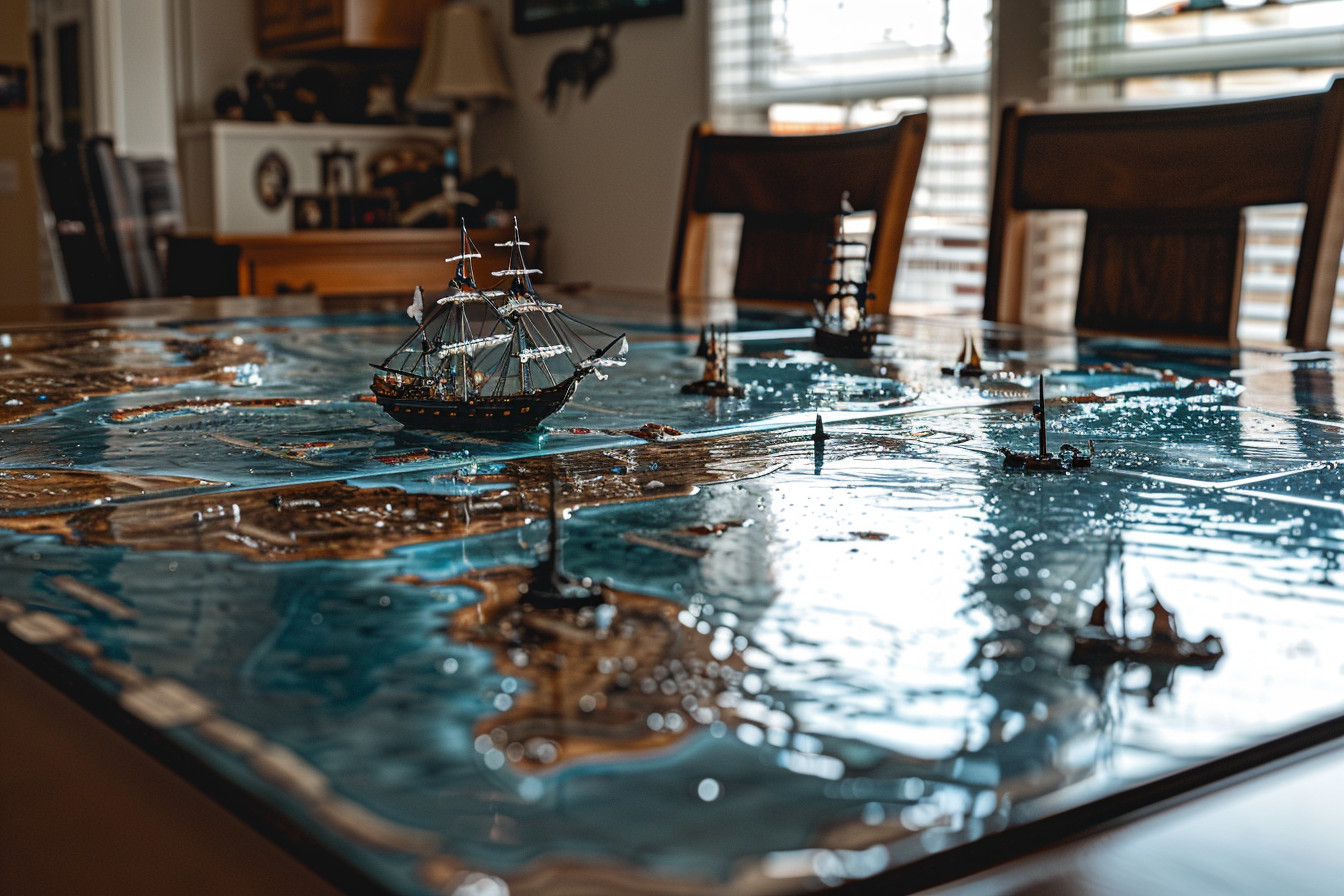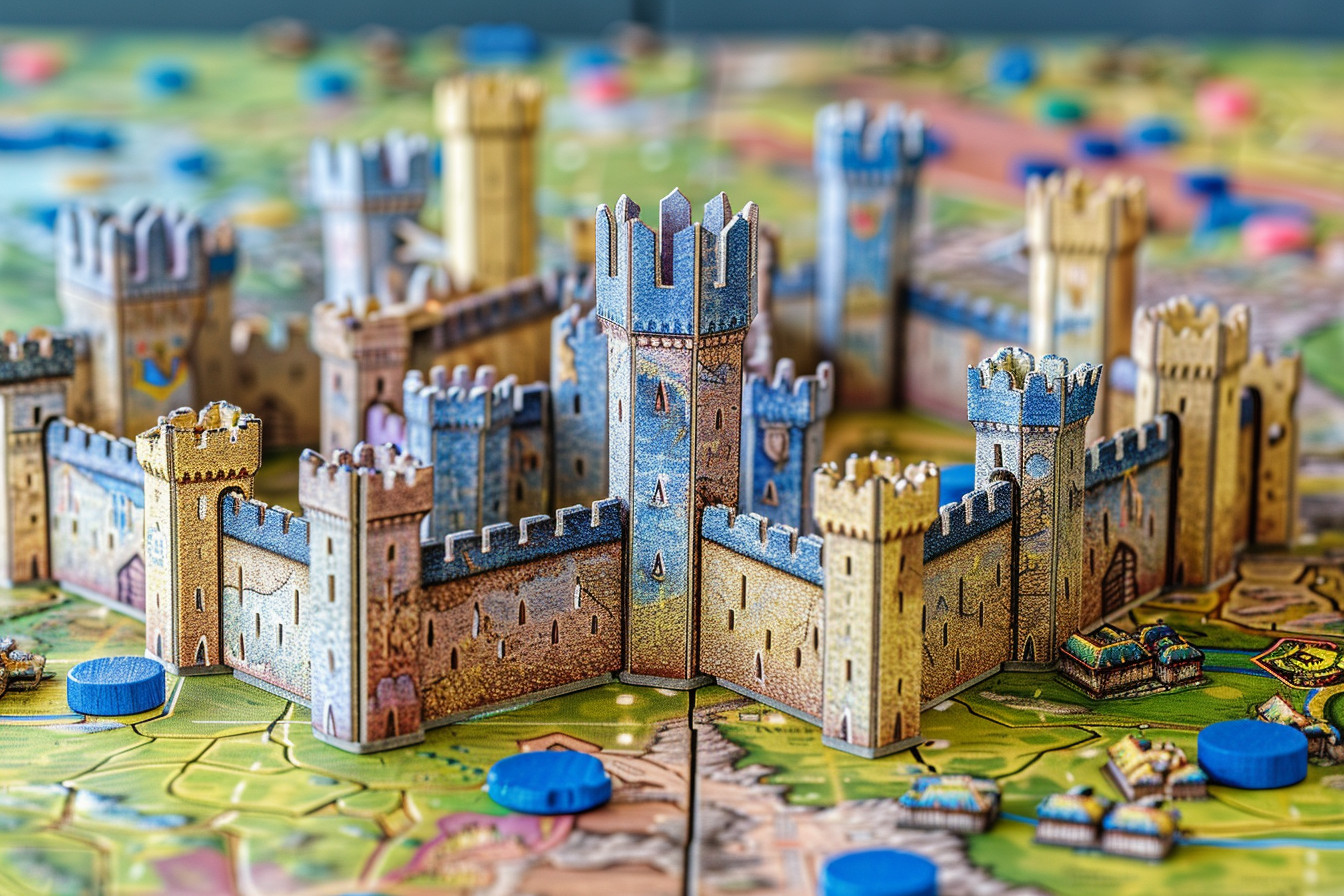A strategy-puzzle game with a jaunty twist of fate, “The Isle of Cats” was created by famed board game designer Frank West, of City of Kings fame. In this game, players are petty lords prowling around an island, rescuing as many cats as possible. Players have their big, evil overlord to watch out for: Lord Vesh. And did I tell you he is on his way to the island? His unlucky is bad for you, the island’s kittens, and for game night as a whole. Because of its experience points-style premise, “The Isle of Cats” can be played with 1 to 4 players, making it suitable for solo, couples, or family night play.
The artwork in the game is beautiful. The island and the cards that depict the cats living on it are vibrant and full of life, making the illustrations in and of themselves something close to tangible. Everything about what you see in the game is appealing, and incredibly high-quality at that. Each cat has a unique look to it, as well as a distinctive pattern of moves.
The components in the game are similarly divine. The sort of quality that allows for the game to be played over and over again without any of those pesky types of problems that come up when a board game is made with an excess of cardboard.
The first time I played “The Isle of Cats,” I instantly fell in love with it. And so did the three other players sitting around the table with me that day. We talk a lot in our gaming groups about games, and this was one game that we actually became mostly quiet about—it became an intense head-to-head—except for the player in the lead role of the round that must read aloud the card instructions for the next event. We, as cats, must always be on our high alert! Cats can’t possibly save themselves, but we could save them; what was our next move? In that Campaign of Nonsense, comical as it might sound, was the day that Fergus’ boat won us over.
At first glance, The Isle of Cats appears complex because the box is stuffed with many pieces (cards and tiles in four big ziplock bags). After you’ve sorted through the components, which takes a while, you’ll be able to follow along easily with the rulebook on your first proper setup. Followed by a not-too-athletic mental best feline stretch, you’re off to a comfy game corner in no time.
The first step is to shuffle several of the pieces and place them in their respective areas. The Oshax and the rare find take the northernmost point of the island. Both are placed face down so that the identity of each is concealed; this is all part of creating suspense in the treasure hunt portion of the game. The discovery deck lies in the special area to the right of the player board. The only fully visible card in the discovery deck is the topmost one, and there’s a good reason for this because it takes the next step in treasure hunt to all players in the first round.
In addition, every player gets several personal lesson cards. These give you secret goals that can earn you extra points at the end of the game. I really like these because they can add an entirely new layer to the gameplay. You not only have to decide whether to work on your public set of blocks and cards, as in most games, but you also have to decide whether to make your private set of goals part of your table strategy.
An unforgettable scheme involved an intensely contested game during a night at my friend’s house. We devoted even more time than usual to the careful organization of the El Grande tower, to seating the “king” and the “councillors” around his wooden power base, and to spreading out the marker disks and the caballeros among the provinces so that we were ready to commence the next round of the wonderful El Grande experience.
“The Isle of Cats” is a tactical board game where individuals aim to preserve as many felines as possible and look after their resources while doing so. Players have to get through five different rounds that encompass several key phases: Discovery, Drafting, Rescue, and Placement.
The playful deck of discovery cards includes treasures like cat baskets (which we found vital for rescuing the 50 cats), treasure maps, Oshax (a unique player character), and Deja Vu portals. The cat deck is full of cuddly and colorful cats of all stripes, while the lesson deck offers golden nuggets of wisdom and pastel colors. We found gameplay to be fun and mostly intuitive, though occasionally it was hard to remember if we’d seen a rule somewhere or if we’d just made it up.
The heart of the game lies in rescuing the cats. Players use cat baskets and fish tokens to entice the stranded cats onto their boats. Each type of cat has a different shape, so players must carefully consider where to put the cat figures on their boats. Failing to place a cat figure anywhere without the use of a common life raft card may mean having to sacrifice a large enough vessel to carry the number of cats needed for victory in order to squeeze the cat figure in.
The puzzle of how to place cat tiles is delightful. Players are asked to fit the shapes and silhouettes of the cat tiles they eagerly want on their ships. Rats on board? Well, you need cats on your ship then! In the world of The Isle of Cats, that makes perfect sense. And do better in the game, one might be on the way to becoming a “crazy cat person.” Still, whatever you have to do to get the kind of bonus that a crazy cat person might get if they took part in a game on a ship is worth doing.
The ebb and flow of the game keep gamers immersed. Each stage offers a potent mixture of cunning and interfacing, of plotting and conversing. The cardinal game actions are drawing, saving, and placing. These three lead actions unfurl in snappily paced turns that keep the podcast-length games from overstaying their welcome.
There are many reasons “The Isle of Cats” is special among board games. First and perhaps most obvious is its theme. It’s a game about rescuing cats. But the actual actions in the game (the things you do while playing) closely follow the theme, as well. What you do isn’t all that different from what you’d do if “The Isle of Cats” were not a board game but a true-to-life cat rescue mission.
A huge plus is the replayability of the game. There are so many different features of the game that even when you play it multiple times, you can have a totally unique experience. The reasons for this replayability of the game lie in the multiple strategies that can be pursued (every game can be quite different) and the Lesson cards that can be pursued (every game can be, in a sense, a sort of different “mini-story”).
The game strikes a fine equilibrium between strategy and chance. An element of luck exists in the hands of the cards you’re dealt with and the assortment of tiles accessible to you at the start of the game. Yet, the ease at which you attain victory (or the reverse) seems always attributable to how effectively you’ve used the setup phase of the game to plan a few moves in advance. That’s a signal of a damn fine game!
What I like the most is the solo play mode. As someone who always has enjoyed board games by myself, the solo play in “The Isle of Cats” has scratched that itch. The solo mode is part of the AI-driven experience, and it’s a satisfying challenge. A computer-controlled competitor threatened to turn a satisfying experience sour for me with the first game I played, but one of the many admirable aspects of “The Isle of Cats” is how it seems to predict that and offer a panoply of solutions.
An unforgettable positive of this game is its inclusivity. It is simple enough for someone who has never really played a board game (like my mother) to get into. Yet, there is a lot to think about, a lot of factors to consider, and on top of it all, the basic goals are rather easy to accomplish; so even if you and your fellow players get caught up in an environment where the decision-making aspect of the game doesn’t allow the gallant knight on the far side of the table to win, you can at least rest be assured you and your group are capable of winning.
Finally, the quality of the components is excellent.
The tiles that represent the cats, the fish tokens, and even the Oshax “boat” cards are sturdy and should stand up to many, many plays. I really appreciate the effort that went into the making of this game and rarely have I seen a game that has such attention to detail in the components. The artwork, too, I must mention, is whimsical and fun and really enhances the theme and the experience of the game.
Even though it does many things well, “The Isle of Cats” has a few weaknesses that may impact play. It is a lengthy game to set up, which is not necessarily great when you’re trying to make the first impression on a new player. The worst part is, once you have some experience, you may not feel like that setup gets easier or faster. This is not a great game to just pull out of the box and play on a moment’s notice, which is what we were hoping to do at the inaugural event.
The complexity of the game can be intimidating. This is by no means a simple, straightforward game, and the multitude of cards, rules, and strategic elements that have to be accounted for feel like a recipe for a very rich experience. In the first several playthroughs of the latest Fire Emblem, some players might have felt overwhelmed by all the new stuff they were expected to internalize.
For those who are expecting a game as simple as TIC TAC TOE, Fire Emblem doesn’t offer the learning curves they’re hoping for.
A second issue is possible over-analysis. When there are so many options to mull over, players can freeze up and take forever to make a decision. This isn’t necessarily a problem with the design of the game. Sometimes you’ll just be hanging out with someone who really wants to play a perfect game. You’ll be at the kind of party where there’s time for that. Except, in this game, you can’t really play a perfect game—there are simply too many hidden interactions and possibilities.
Moreover, the game’s competitive aspect may not fit with the group. Although there is always competition inherent in any game, these sorts of games involve very little chance, luck, or managerial skill. That means that nearly every game is a “friendly” — until it isn’t. Some groups just don’t really work with the games that call for such intense concentration and the friction that can occur when the game isn’t going someone’s way. Those games always have the potential to be truly memorable in a negative sense.
Finally, the cost of “The Isle of Cats” may deter some people. The game is not cheap, and for good reason: the artwork is simply fantastic and the components are top-notch. I don’t quibble at all with what the publisher is charging for the game. I think it’s worth every penny they’re asking. Still, the price point could be a problem for some, especially budget gamers.
“The Isle of Cats” joins the ranks of the top games, not as a derivative but as an emergent member with its own peculiarities and wonderful takes on what has come before. Here’s how it stacks up with a few of our favorites.







